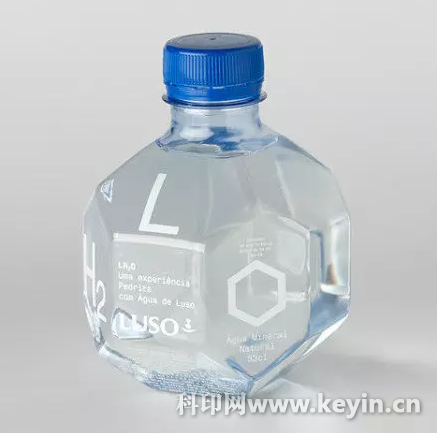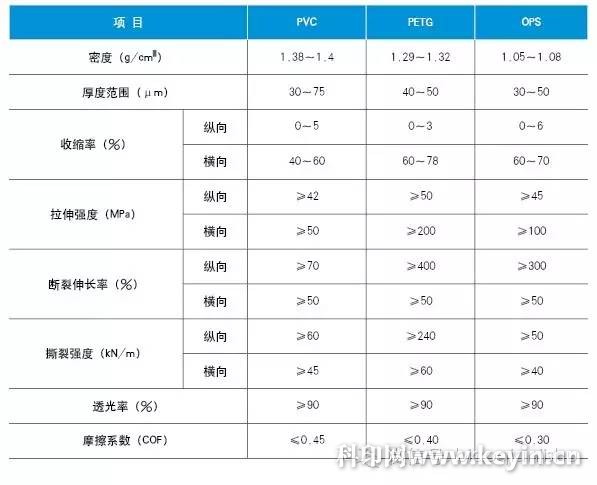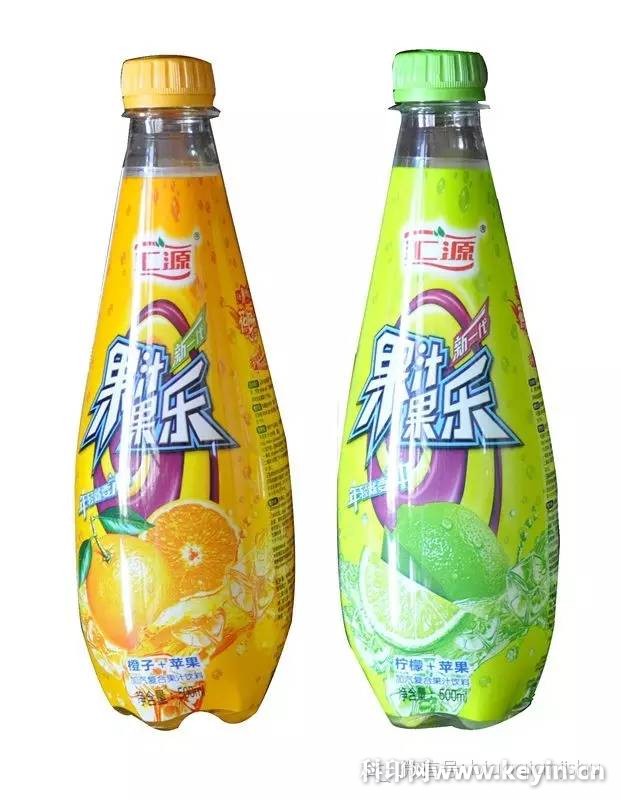[Ke Yin Network () News] Heat shrinkable labels are widely used in the field of beverages and water labels, providing space for the design of shaped bottles. This article summarizes the performance of commonly used heat shrinkable materials to provide a reference for prepress design of labels.

Heat shrinkable label advantages
Heat shrinkable labels offer several advantages over paper labels and non-shrinkable plastic labels. First of all, the heat shrinkable film has high transparency, and most of them adopt gravure printing, so the label printing is colorful, the graphics are rich in layers, and the stereoscopic effect is strong. Secondly, because of the close decoration of the packaging container and the 360° overall packaging, the product can be highlighted. Appearance shape, improve the appearance of the product, and produce a good shelf display effect; again, the shrink film has the characteristics of moisture-proof, anti-corrosion, anti-impact, tear-resistant, and the printing method adopts the printing, which enhances the packaging of the product in transportation. Protection in the sales chain.
Because of so many advantages, heat shrinkable labels have been widely used in China since the 1990s. After nearly 20 years of development, the level of domestic heat shrinkable label printing technology and equipment is basically the same as that of foreign countries. However, in the label film materials, the gap still exists. Developed countries are always in a leading position in terms of material performance and environmental protection requirements. .
Performance of commonly used materials for heat shrink labels
The main materials for producing heat shrinkable labels are polyvinyl chloride (PVC), polyethylene terephthalate (PET), and polyethylene terephthalate-1,4-cyclohexane dimethanol ester (PETG). ), a film of oriented polystyrene (OPS), polyethylene (PE), polylactic acid (PLA), etc. Due to material properties and comprehensive cost, the current mainstream heat shrinkable label materials are PVC, PETG and OPS. The physical properties of these three film materials are summarized in Table 1 for comparative analysis.

Table 1 Summary of physical properties of commonly used heat shrinkable film materials
It can be seen from Table 1 that the light transmittance of all three heat shrinkable films is more than 90%, indicating that they have good transparency and can ensure excellent label printing effect.
According to the author's experience, the stiffness of PETG film is slightly higher than that of PVC film, which is far superior to OPS film; PETG film has the highest toughness, OPS film is the second, and PVC film is the lowest.
Since the heat shrinkable label is a high speed sleeve when wrapping the bottle body, in order to facilitate the rapid shrinkage of the film, it is often necessary to punch the vent hole in the film. In order to ensure the efficiency and stability of punching, a row of continuous and small venting holes, also called vent lines, is produced in the longitudinal direction during production. PETG's film rigidity is higher than PVC, PVC is higher than OPS, so PETG film is the lowest punching efficiency, and OPS punching is easier to control than PVC.
OPS has the lowest tear strength in both the machine and the machine direction. The longitudinal tear strength of PETG is very high, nearly five times that of OPS. Practice has shown that the OPS label is the easiest to completely remove the heat shrink label from the bottle. PETG, because of its high tear strength in the longitudinal direction, is difficult to tear, and its tear path will be shifted to a much lower lateral tear strength, so that the underlying label is often not completely peeled off.
In terms of shrinkage, the PVC film has a moderate lateral shrinkage of between 40% and 60%, which is more suitable for ordinary bottle types. OPS film has a higher shrinkage rate, while PETG film has the highest shrinkage rate, which can reach more than 75%, so it can be applied to various shaped containers (such as a narrow-necked wide-necked conical bottle, an elliptical stereoscopic flat bottle, and a concave on one side). The bottle shape of the handle, etc., as shown in Figure 1, is achieved by shrinking the label to the full package of the bottle.

Figure 1 PETG heat shrink label
The surface friction coefficient of OPS film is significantly lower than that of PVC film and PETG film, so there are obvious differences in the winding and inspection process after label printing, and the labeling process at the customer's place. Fully consider it. Despite a certain process, the OPS heat shrinkable label can achieve a calibrating speed of 50,000 bottles per hour on a high speed sleeve labeling machine, but a high precision automatic labeling device must be used.
The above content is reproduced in the " Tagged Technology " official WeChat (biaoqianjishu) , authorized by the company to publish, copyright, piracy will be investigated!
 Scan the QR code to follow the "Tagged Technology" official WeChat
Scan the QR code to follow the "Tagged Technology" official WeChat Add some unique style and functionality to your home with this Coffee Table from the popular collection. The top shelf and drawers creating a multipurpose work surface so you can work from home, surf the web, or eat a snack while relaxing on your couch. Other features include hidden storage beneath the top and drawers for storing blankets and board games or displaying knick-knacks and picture frames. This Coffee Table is finished on all sides making it a versatile fit for any room in your home.
Coffee Table,Glass Coffee Table,Smart Coffee Table,Coffee Table Sets
Baklam , https://www.baklamfurniture.com